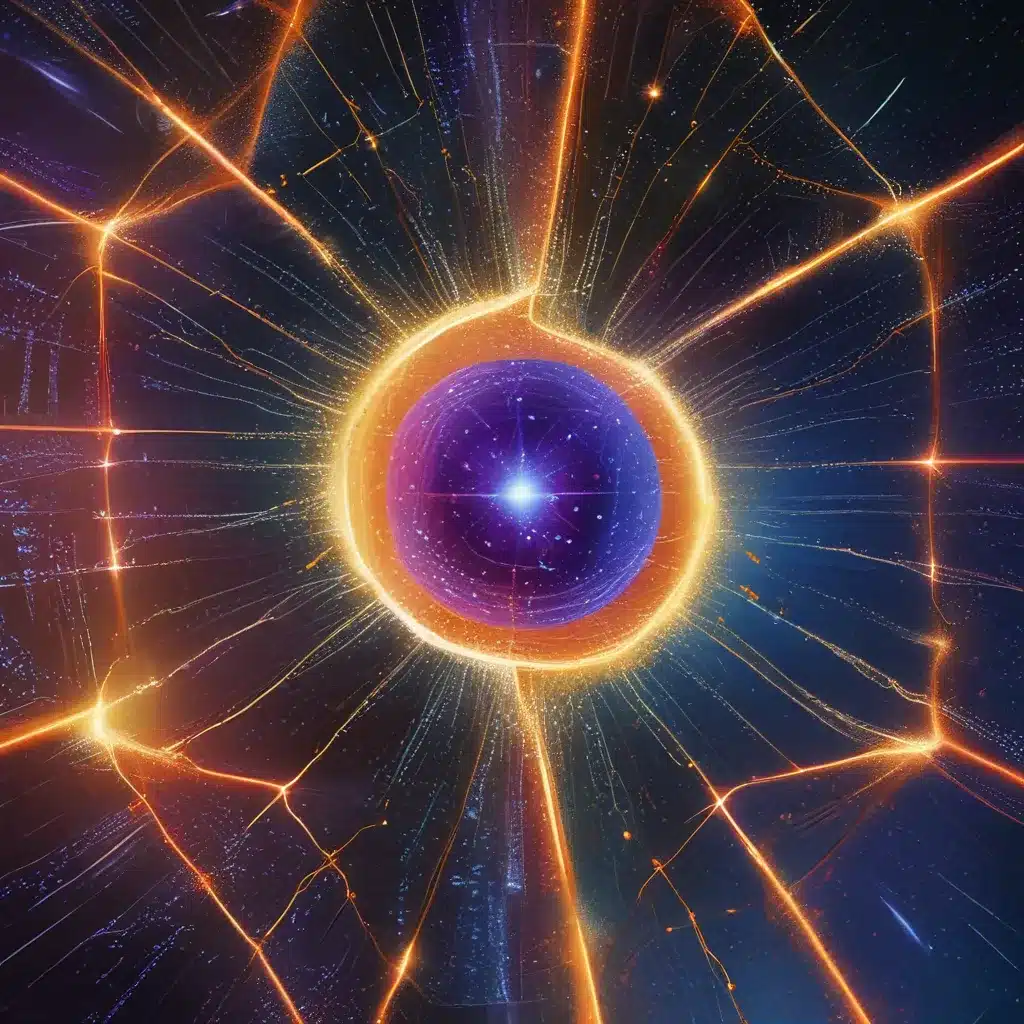Discovering the Unseen World
As I sit here in my home office, gazing out the window at the bustling world beyond, it’s hard to imagine that the very fabric of reality is made up of subatomic particles – the fundamental building blocks of our universe. This is the realm of quantum mechanics, a field that has not only revolutionized our understanding of the physical world, but has also opened the door to a new era of technological breakthroughs that are poised to change the way we live, work, and interact with the world around us.
You see, I’ve always been fascinated by the idea that the world we perceive is just the tip of the iceberg. Beneath the surface, a whole universe of unseen activity is taking place, governed by the strange and often counterintuitive laws of quantum physics. It’s a realm where particles can exist in multiple states simultaneously, where information can be transmitted instantaneously, and where the very act of observation can alter the outcome of an experiment.
The First Quantum Revolution
The journey towards the quantum revolution began in the early 20th century, when physicists like Max Planck, Niels Bohr, and Erwin Schrödinger began to unravel the mysteries of the quantum world. Their groundbreaking work laid the foundation for a new understanding of the nature of matter and energy, one that challenged the classical Newtonian view of the universe.
One of the most significant breakthroughs of this era was the development of the transistor. As Symmetry Magazine explains, researchers at Bell Labs, a spin-off of AT&T, were able to mimic the function of vacuum tubes (the bulky, heat-generating devices that were the backbone of early electronics) using their knowledge of quantum mechanics. This led to the invention of the transistor, a small, efficient device that would go on to revolutionize the world of electronics and pave the way for the digital revolution.
But the first quantum revolution was just the beginning. As researchers delved deeper into the quantum realm, they uncovered a world of strange and seemingly paradoxical phenomena, from the wave-particle duality of light to the concept of quantum entanglement, where particles can become inextricably linked, even over vast distances.
The Second Quantum Revolution
Fast forward to the 21st century, and we find ourselves in the midst of what’s known as the “second quantum revolution.” This new era is defined by our ability to not just observe, but to actively manipulate and control the behavior of individual particles, unlocking a vast array of potential applications that were once the stuff of science fiction.
At the heart of this revolution is the development of quantum computing – a radically different approach to information processing that harnesses the unique properties of quantum systems. As researchers from the University of New Mexico explain, quantum computers have the potential to solve certain problems exponentially faster than their classical counterparts, thanks to their ability to perform computations using qubits (quantum bits) that can exist in superposition, rather than the traditional binary bits of classical computing.
One of the most exciting applications of quantum computing is in the field of cryptography. The way that most modern encryption works is by relying on the difficulty of factoring large prime numbers – a problem that a quantum computer could theoretically solve in a matter of minutes, rather than the thousands of years it would take a classical computer. This has profound implications for the security of our digital world, as it could potentially render much of our current encryption methods obsolete.
Quantum Sensing and Beyond
But quantum computing is just the tip of the iceberg when it comes to the second quantum revolution. Researchers are also exploring the use of quantum systems for ultra-precise sensing and measurement, with applications ranging from navigation and geophysics to medical imaging and materials science.
For example, as MIT Spectrum reports, quantum sensors that harness the properties of individual atoms or defects in diamond crystals are helping to push the boundaries of what’s possible in fields like navigation and bioimaging. These sensors can measure things like magnetic fields, gravity, and even the subtle vibrations of individual cells, with a level of precision that was unimaginable just a few decades ago.
And the potential applications of quantum technologies don’t stop there. Researchers are also exploring the use of quantum simulation to better understand complex physical and chemical systems, with the ultimate goal of developing new materials and catalysts that could revolutionize fields like energy, medicine, and environmental science.
The Quantum Future
As I delve deeper into the world of quantum physics, I can’t help but be in awe of the sheer potential of this field. It’s a world where the impossible becomes possible, where the boundaries of our understanding are constantly being pushed, and where the applications of this knowledge could truly transform the way we live our lives.
And the best part? We’re just getting started. As researchers at MIT point out, the second quantum revolution is well underway, with researchers and companies around the world racing to unlock the full potential of quantum technologies. From secure communication networks to revolutionary new drugs, the possibilities are endless.
So, what does the future hold? Well, if the history of quantum physics is any indication, it’s bound to be full of surprises. But one thing is certain: the quantum revolution is here, and it’s going to change the world as we know it. And who knows, maybe one day, I’ll even be able to harness the power of quantum mechanics to make my own home office a little more efficient. After all, as the team at ITFix likes to say, “the future is quantum, and it’s closer than you think.”













